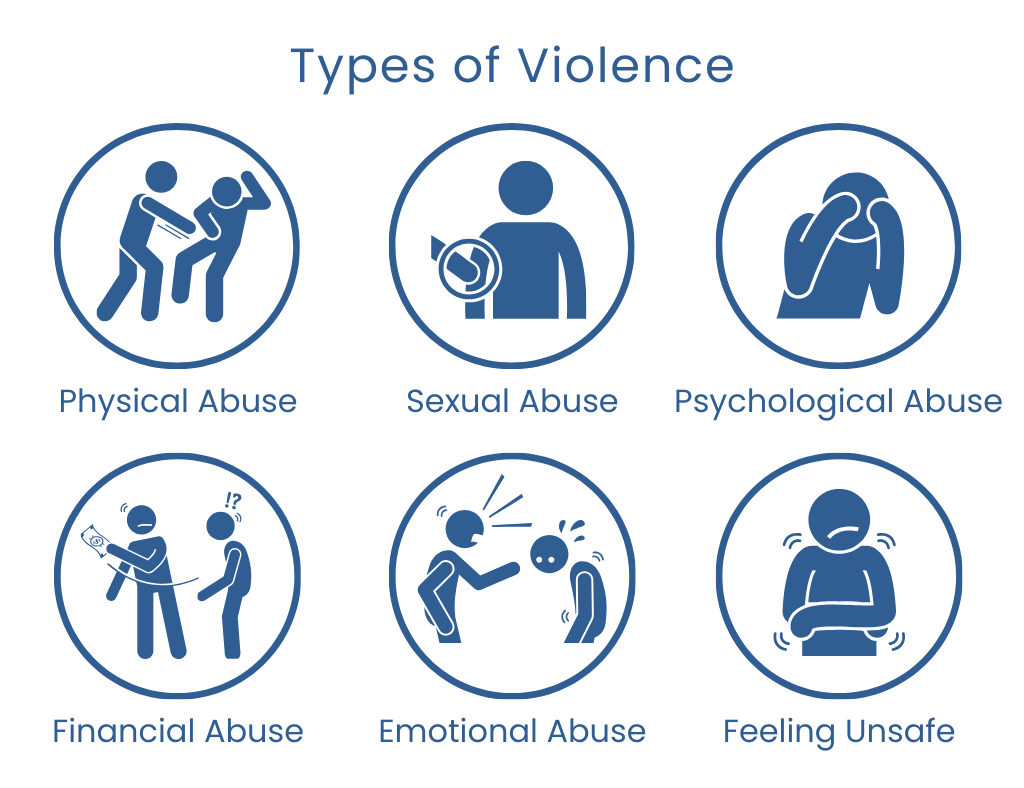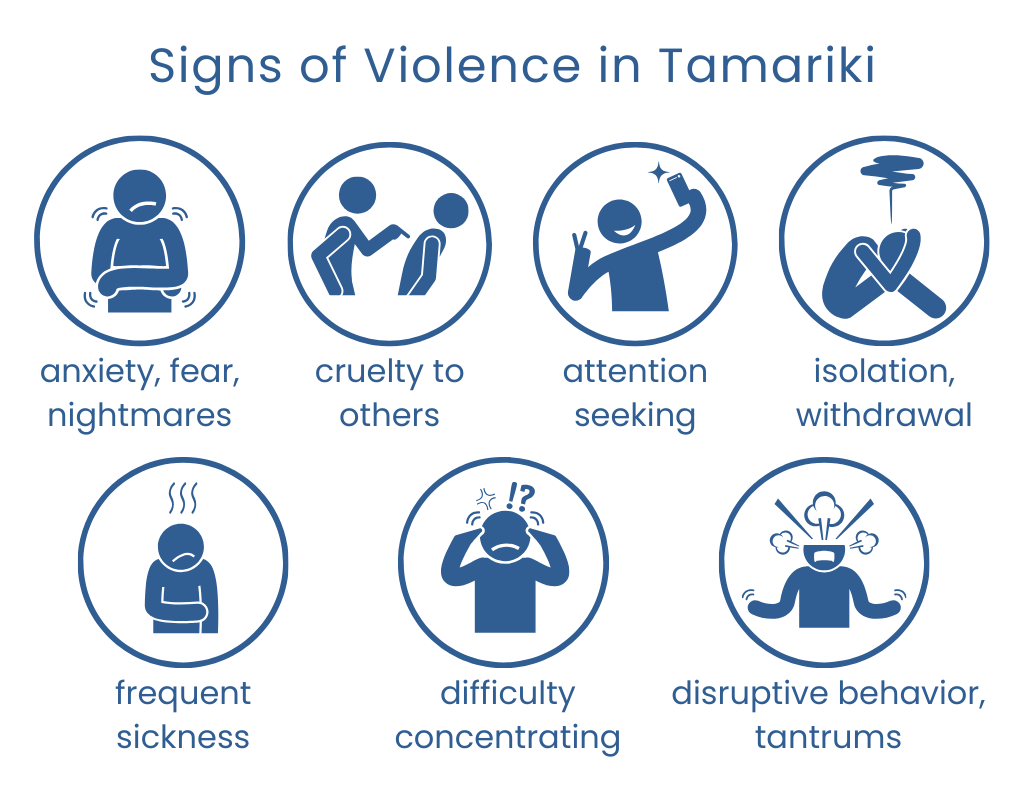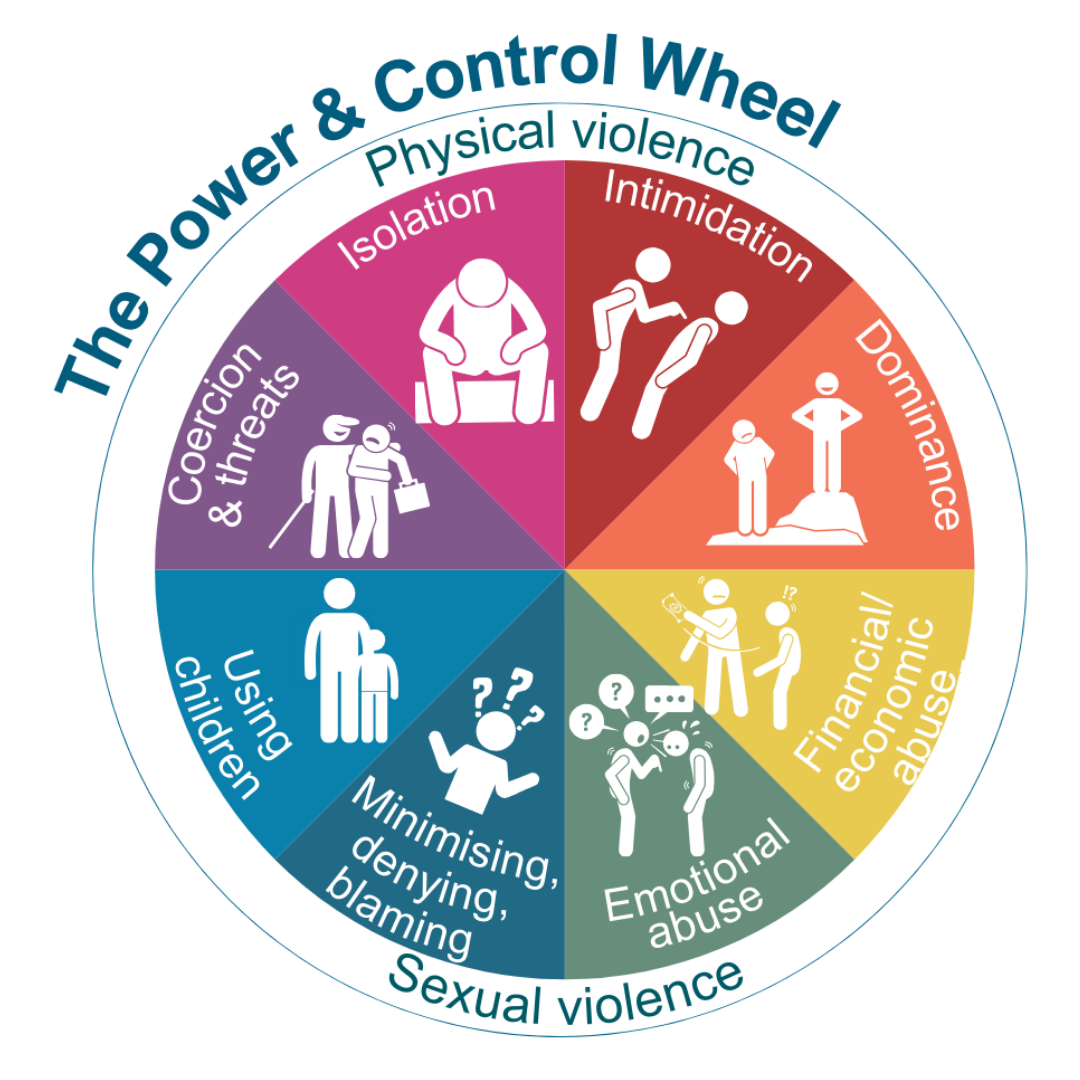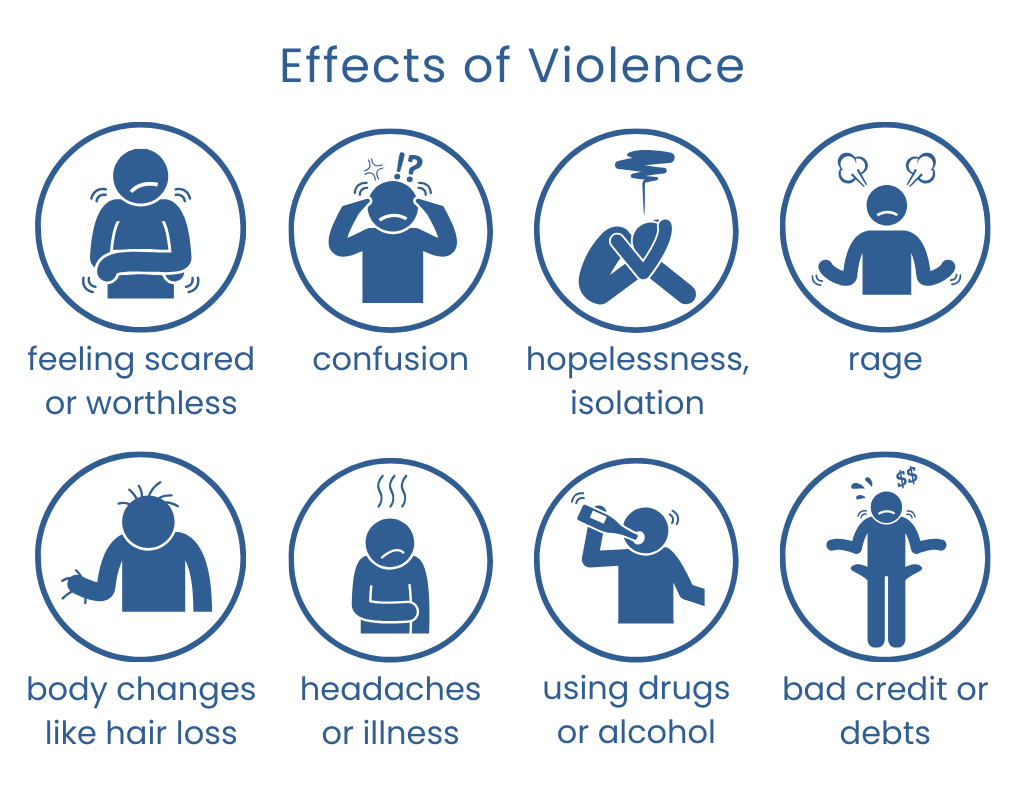
What is family violence and sexual violence?
Family violence has many names. It is commonly known as domestic violence, intimate partner violence, or family harm. At Aviva, we favour the term ‘family violence’, but ultimately all of these labels describe the same thing. Violence can be physical, sexual, psychological, financial, emotional, or spiritual. A major sign that something's wrong is if you or your children feel fearful.
Sexual violence is any type of sexual contact or behaviour that you do not willingly and explicitly agree to. It includes a wide range of behaviours, and the words used to describe these are varied. They can include rape, attempted rape, sexual violation, coerced sexual activity, and sexual harassment or threats (including digital harassment and threats).
What does violence look like?
Violence is any behaviour designed to gain power and control over a spouse, partner, child or other intimate family member. Many people associate the word ‘violence’ with physical assaults, but family violence is not limited to physical abuse.
- Using coercion and threats
- Using intimidation
- Emotional abuse
- Isolation
- Minimising, denying and blaming
- Using children
- Economic abuse
- Using/asserting dominance over another person
- Sexual assault/abuse
Does any of this sound familiar? Complete our relationship check to evaluate your relationship.
Comparatively, a healthy relationship looks like:
- Non-threatening behaviour
- Shared responsibility
- Economic partnership
- Respect
- Honesty and accountability
- Responsible parenting
- Negotiation and Fairness
- Trust and support
See our interactive Power and Control Wheel and Equality Wheel at the bottom of this page for more information.
What are the effects of violence?
Violence is more than just bruises, head injuries or broken bones. It can also look like:
- Feeling scared, worthless, or dumb
- Feelings of shame and guilt
- Confusion
- Loss of self-confidence and self-esteem
- Feelings of hopelessness or powerlessness
- Increased feelings of rage
- Anxiety, depression, self-harm or thoughts of suicide
- Body changes like hair loss, weight gain or weight loss
- Sleep issues or restlessness
- Constant illness, stomach ulcers, headaches/migraines
- Using alcohol or drugs
- Sexual transmitted infections
- Difficulty trusting people
- Isolation
- Bad credit or debts
- Being stopped from getting a job
- Having to pay for all the children's things

For children, it might look like:
- Anxiety disorders; excessive fears; shyness; nightmares
- Cruelty to animals or other people
- Attention seeking behaviours
- Suppressed feelings and failure to relate well to others
- Becoming withdrawn, uncommunicative and isolated
- Self-harm or suicide attempts
- Frequent sickness; failure to thrive
- An inability to concentrate or engage in learning or play
- Difficulty forming attachments and maintaining good relationships
- Trouble sleeping, or settling down
- Disruptive behaviours - tantrums, bullying, aggression
- Being unable to confide in or trust other adults
Child abuse is family violence. Children who live in a home where there is violence are significantly more at risk of being the victims of abuse and neglect than other children.
Sexual & Family Violence Statistics in Aotearoa
A third of New Zealand adults (30%) have experienced violence by an intimate partner in their lifetime. [1]
56% of women experience intimate partner violence in their lifetime. This is higher for wāhine Māori. [2]
One in three women (36%) and one in eight men (13%) have experienced one or more sexual assaults in their lifetime. [3]
Violence is hidden and often goes unreported. Only 6.6% of sexual violence is reported to police. [4]
Women experience more types of violence, more frequently and severely than men. More women reported serious injuries, fear, and physical and mental health impacts following intimate partner violence. [5]
74% of people killed by their partners between 2007 and 2021 were women. [6]
Pacific peoples disproportionately experience material hardship, which can exacerbate some forms of violence. Pacific children are 4.8 times more likely to die from child abuse and neglect than children of other ethnicities. [7]
Wāhine Māori are more likely to be subjected to family violence or sexual violence than any other ethnicity or gender. One in two (49%) Māori women experience physical or sexual intimate partner violence in their lifetime, compared with one in three (31%) for all women. [8]
Discrimination and stigma are drivers of violence towards LGBTQIA+ people and create barriers for effective help. Almost one in two LGBTQIA+ people (45%) have experienced sexual assault. [9]
Disabled people experience violence in different ways and at higher rates than other groups. 18% of disabled young people were hit or physically hurt in the place they usually live. [10]
44% of disabled people have experienced sexual assault. [11]
When children and young people experience violence and harm it leads to poorer outcomes and limits their potential. One in ten children and young people aged 12-18 were physically hurt by adults at their home in the past year. [12]
56% of victims of sexual assault are between 15 and 29 years old. [13]
In ethnic communities, violence can take distinctive cultural forms, including dowry and ‘honour’ related violence, forced and underage marriage, and female genital mutilation. 17% of people in ethnic communities experienced controlling behaviours by a family member in the past year. [14]
Violence experienced by older people is often not visible because of poor health or disability, being socially isolated, or dependent on others for care. As many as one in ten older people in New Zealand will experience some kind of elder abuse which includes physical, sexual, psychological, and/or economic abuse and/or controlling behaviours. [15]
Statistics are taken from Te Aorerekura Action Plan 2025-2030. Breaking the Cycle of Violence.
Sources:
- NZCVS Data Table 2023 (Cycle 6) Sexual vilence and family offences
- J. Fanslow, B. Mellar, P. Gullivar, & T McIntosh (2023). Ethnic-specific prevalence rates of intimate partner violence against women in New Zealand. Australian and New Zealand Journal of Public Health. 47(6), 100105.
- NZCVS Data Tables 2023 (Cycle 6) Sexual Violence and Family Offences.
HELP Auckland Preventing Sexual Abuse. Supporting Survivors Sexual-Abuse-Statistics-September-2023.pdf - Five years of insights on crime and victimisation in Aotearoa poster (2023)
- Fanslow, Malihi, Hashemi, et al. (2022). Prevalence of interpersonal violence against women and men in New Zealand: results of across-sectional study. Australian and New Zealand Journal of Public Health, Volume 46(2).
- New Zealand NZ Police (2024). NZ Police Statistics on Homicide Victims in New Zealand 2007-2021: A Summary of Statistics about Victims of Murder, Manslaughter, and Infanticide. Wellington: New Zealand NZ Police
- Family Violence Death Review Committee (2014). Fourth Annual Report. January 2013 to December 2013. Wellington: Family Violence Death Review Committee.
- Fanslow, Mellar, Gulliver, McIntosh (2023) Ethnic-specific prevalence rates of intimate partner violence against women in New Zealand, Australian and New Zealand Journal of Public Health, 47(6).
- New Zealand Crime and Victims Survey, Cycle 6, 2023. Ministry of Justice.
- What About Me? National Youth Health and Wellbeing Survey, 2021. Ministry of Social Development.
- New Zealand Crime and Victims Survey, Cycle 6, 2023. Ministry of Justice.
- What About Me? National Youth Health and Wellbeing Survey, 2021. Ministry of Social Development.
- New Zealand Crime and Victims Survey, Cycle 6, 2023. Ministry of Justice.
- New Zealand Crime and Victims Survey, Cycle 6, 2023. Ministry of Justice.
- https://officeforseniors.govt.nz/our-work/raising-awareness-of-elder-abuse/
The Power and Control Wheel
Click on the sections of the Power and Control Wheel and Equality Wheel below for more information. For mobile view, visit this page.
Interactive wheels - computer by Aviva
Contact Us
- Call us on ✆0800 28 48 26 or ✆(03) 378 3847 - 24 hours a day, seven days a week, for people in Canterbury
- Email ✉[email protected] (this inbox is checked Monday-Friday, 9-5)
- If you are a social service or other referring agency, please complete a referral form and forward to Aviva by email


